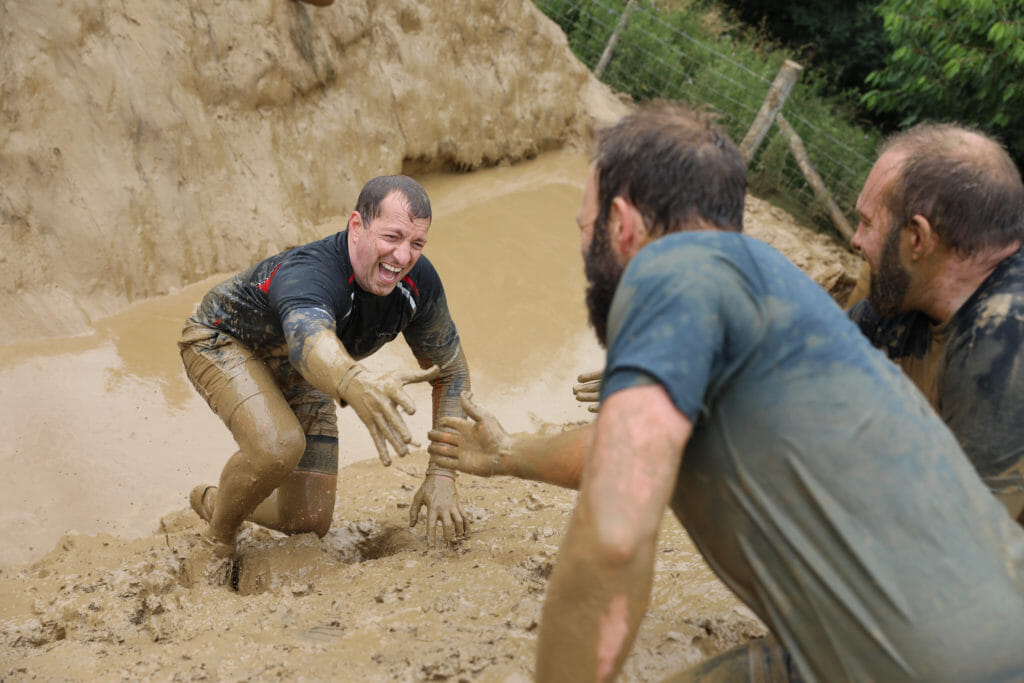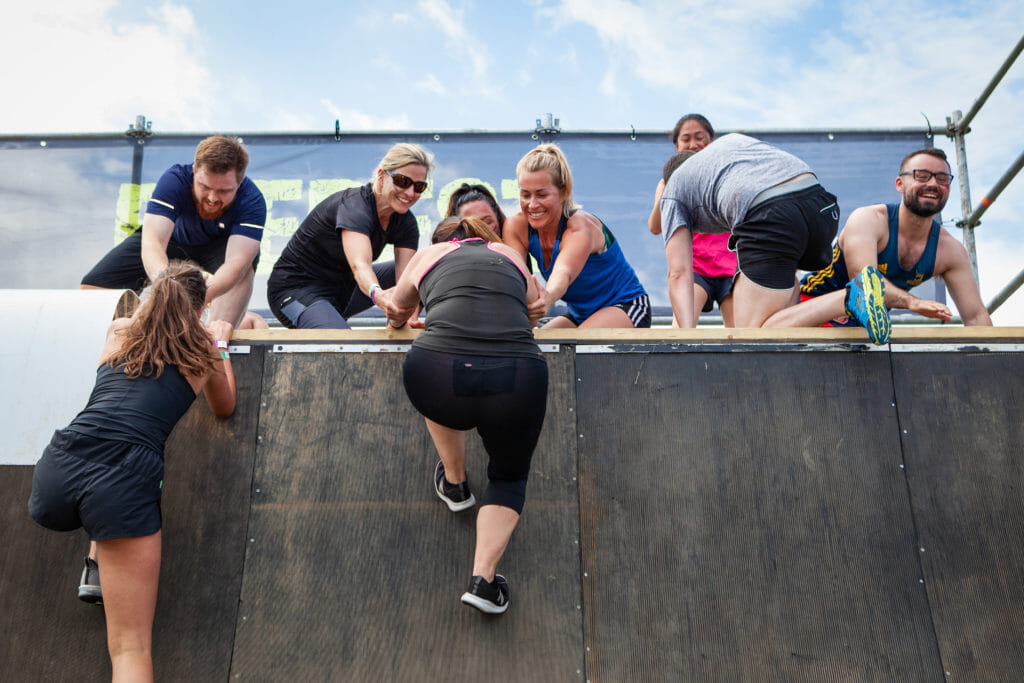3 tips for obstacle race training
How do you prepare for a race designed to be unpredictable and, frankly, chaotic? By keeping your training varied and avoiding injury like the plague!

If you've signed up to an obstacle course race, we'd wager that you fall into one of three categories:
You've signed up with a group of friends and are much more interested in laughing at each other struggling over obstacles than racing.
You've run a couple of 10K runs before and are looking for a new challenge.
You're a committed OCR runner and are planning to race your way around the course!
The reason this matters is it will affect how you train for your obstacle race - in fact, if you even train at all.
Think about it:
Taking on the obstacles with a group of friends means you'll probably be moving at a leisurely pace, more concerned with chucking mud at each other than whether you complete the monkey bars in one go. At the other end of the scale, OCR competitors need to be agile enough to navigate complex obstacles at speed, strong enough to hold their own bodyweight and fit enough to endure miles of running.
So whether you're a racing snake or are just looking to get round in one piece, training for an obstacle race means considering all of those different factors. With that in mind, where on Earth do you start?
Right here.

Events like Tough Mudder will test your physical endurance!
Run, lift, repeat
An obstacle race is, first and foremost, a running event. True, there is a bit more to it than that but if you neglect running in your training and focus purely on the obstacles then you'll regret it pretty quickly after setting off.
Obstacle races generally range from 5K to about 20K, with the exception of some daft (read: epic) events in the OCR World Championships circuit and the World's Toughest Mudder. So while you don't need to be a marathon runner to enter one, you do need enough gas in the tank to endure a middle distance run.
If you're comfortable enough to run 10K without stopping, you're probably fine for most obstacle races, since you'll be stopping at obstacles along the way. (Remember, this is only you want to run round the course - walking with friends is fine!)
Which is where your training needs to be mixed up a bit.
Obstacle course builders go out of their way to create new and exciting contraptions that set them apart from the competition, with some obstacles looking like they're fresh from a Ninja Warrior course. For the most part, though, you'll be faced with climbing walls, monkey bars, tunnels to crawl through, tyres to flip and, of course, mud pits.
So while focusing on running endurance needs to be a staple of your training, neglecting any strength training will mean you get caught short fairly quickly.
Introduce some basic cross-training into your weekly routine to prepare for the physical demands of an obstacle race. The vast majority of the obstacles themselves will only involve your bodyweight, so don't worry about setting new PBs in the gym or joining a CrossFit box. Just focus on the basics: squats, lunges, press-ups, pull-ups and core exercises. A couple of bodyweight strength training sessions each week should be enough for you to approach obstacles with some confidence.

You'll encounter a wide range of obstacles, so be ready to test yourself.
Expect the unexpected
Part of the appeal of obstacle racing is the huge variety of physical movements and demands you'll face along the way. One moment you're running up a hill, legs covered in mud - the next, you're launching into the air to grab a gymnastic ring, swinging over a pit of freezing cold water. The obstacles are many and varied, designed to test you in new and unexpected ways.
Sounds fun, right?
Fortunately, training for a race as varied as this is actually easier than you think. The key is to make sure your training is varied enough to cover an equally wide range of movements.
Sure, you'll need to run at least once every week and keep some routine there will help you to achieve progress, and we'll already covered adding bodyweight training into the mix. But that's not to say that you need to do the same exercises or the same training styles every week.
Switching from steady state cardio to fartlek training will tap into different energy systems; moving from a gym to bodyweight training outdoors will change the demands on your muscles.
Breaking routine and introducing your body to different physical challenges will mean that when you show up on race day and encounter an obstacle that you weren't expecting, you'll find it much easier to adapt. Try adding in completely different training sessions too, like swimming or hiking.

Building strength will help you in a Tough Mudder!
Avoid overtraining
A natural problem with taking on both running and strength training, not to mention trying to vary your sessions to include new movements, is that you could start overtraining very easily. Without enough time to rest, you increase the risk of injury and won't benefit from training.
Our advice?
Focus on your weaknesses. If you're a confident runner but struggle with strength exercises, you've got an obvious target; if you're entering a race from a period of being inactive, starting to run will be your first priority.
From there, you can start to diversify your training and build a more comprehensive training plan that will have you ready for anything. A common sense approach is best: if you add a couple of bodyweight strength sessions into your weekly routine, allow at least a day of rest between them so your muscles can recover. If you spend an hour doing plyometric jumps around a park, it's probably not the best idea to go for a long run the day after.
You can keep your training varied - and therefore, but somewhat counter-intuitively, specific to obstacle race - without overtraining if you prioritise rest and recovery. Sure, it might be beneficial for you to nip to the park and practise swinging on monkey bars. But if you've already trained four times that week and are feeling a bit sore, you'll get more bang for your buck by just resting at home or stretching.
Find an obstacle race
By following those basic principles - of both running and strength training, mixing up your routine and prioritising rest - you'll arrive at the start-line feeling ready to take on any obstacle. But which start-line will you line up at? There's a wide selection to choose from on TimeOutdoors!

- Sun 21 Jun
- £16-£25
Man vs Moor
Take on Exmoor’s toughest challenge and battle the elements in a most exclusive and challenging event combining running, scrambling, tunneling and optional swimming!
- Fun run
- 5K run
- 10K run
- 10 miler